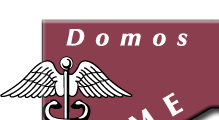It's fairly
easy if you use this simplified formula. Calculate your
total billed revenue over the previous 12 months minus
contractual adjustments (the amount billed over the
allowable),
including anticipated revenue that is holding for
billing, and divide that by 365 to get an average of
your daily sales. For example, if the total revenue over
the last 12 months is 3.65 million dollars your average
daily sales figure would be $10,000 per day.
Now calculate
your total outstanding receivables (again minus
anticipated contractual adjustments). That would include
the total amount of outstanding revenue on your accounts
receivable aging reports, plus the dollar amount of
anticipated revenue that has not yet dropped to accounts
receivable, such as billings that are holding for CMNs
or other documentation. For our example, let’s assume
the total is $800,000. Now take that number and divide
it by your average daily sales. In this example, 800K /
10K = 80 DSO
The current industry
average DSO is about 68 days. For companies that focus
on respiratory products, a DSO in the low 50's is
expected. Complex rehab providers can expect to see a
DSO as high as 90 days. Your DSO will vary from industry
averages depending on which products you provide, and
how many commercial / private insurance payers you
contract with. It is a fact of life that commercial
insurance payers are slower to pay than entities like
Medicare and Medicaid.
A lower DSO usually means
you are doing well, but a DSO that exceeds 90 days is
generally an indication that you need to review billing
and collections processes.
However, keep in mind that
measuring DSO in a vacuum can be extremely misleading.
You’ll need to take your company’s accounts receivable
adjustment practices into account in order for the data
to be meaningful. For instance, a high DSO can be
misleading if your company makes it a practice to seldom
or never write off old AR that has become uncollectible.
On the other hand, if your company tends to give up very
quickly on accounts that may be collectible, a low DSO
may be more a reflection of your willingness to adjust
accounts rather than a measure of how well you collect
cash.
Assuming your
company has a logical adjustment process in place, the
best use of the DSO calculation most likely lies in
trending the results from month to month in order to
measure whether billing and collections efforts are
improving or falling off pace.



